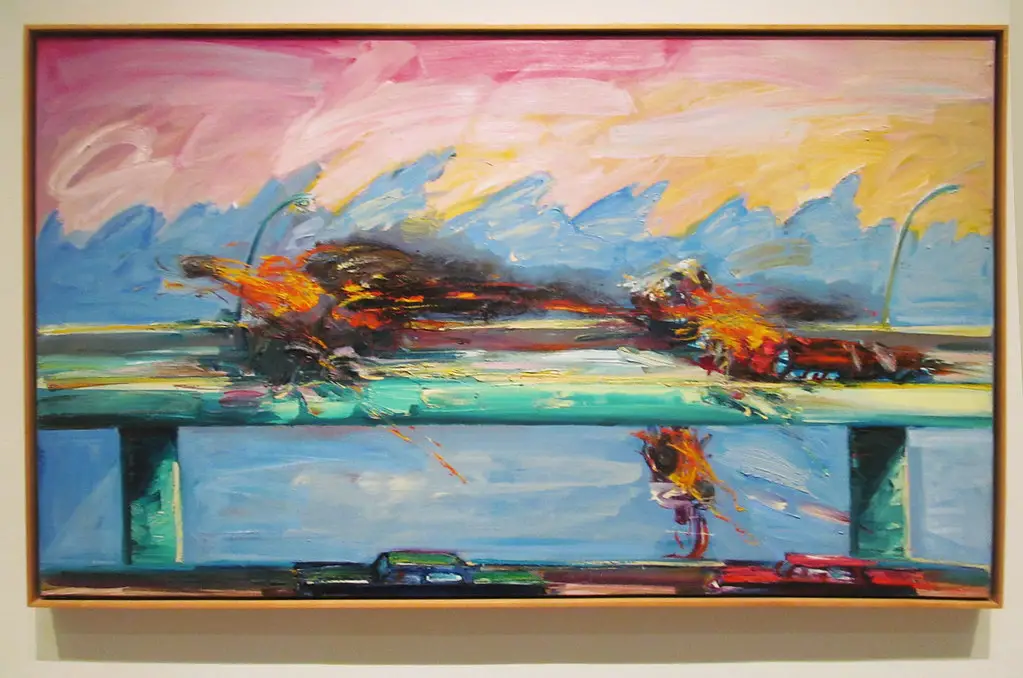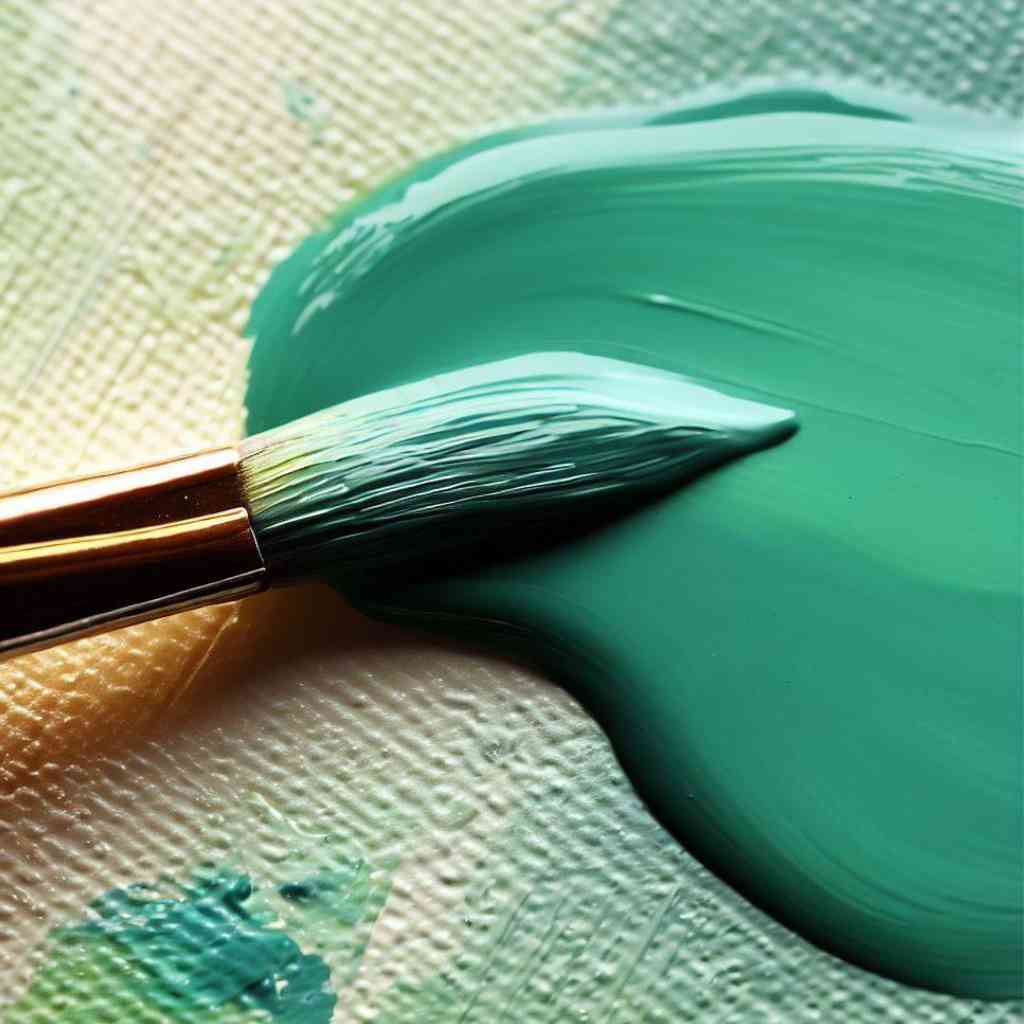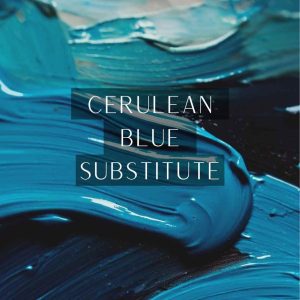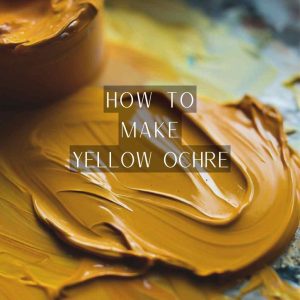Ever stood before a canvas, brushes poised, and pondered the complexity of choosing the perfect shade of green? Phthalo green vs viridian – this isn’t just a choice between two colors; it’s an exploration of worlds within a world.
As you embark on this chromatic journey, prepare to delve into the vibrant realm of pigments, where the allure of Phthalo Green and the subtlety of Viridian beckon, each vying for a place on your artistic palette.
Let’s journey deeper into this realm where color becomes a language, a story, and an expression of your artistic vision.
Phthalo Green: Vibrant Hue
Phthalo Green, derived from the phthalocyanine family of pigments, is celebrated for its intense hue and strong tinting power.
Composed of copper and chlorine, this synthetic pigment boasts a crystalline structure that contributes to its vibrant coloration. Its bold blue-green appearance evokes feelings of lush foliage and cool waters, making it a popular choice among artists seeking striking naturalistic scenes.
The mesmerizing allure of Phthalo Green lies in its ability to dominate a composition with its intensity. This pigment effortlessly captures attention, demanding its rightful place in both landscapes and abstract works.
Viridian: Serene Hue
Viridian is named after the Latin word for “green,” this pigment’s history is intertwined with the emergence of synthetic colors in the 19th century.
Its serene bluish-green appearance captivated artists, offering a fresh alternative to natural pigments while retaining a sense of calmness and tranquility.
Viridian’s composition is rooted in chromium oxide, giving it a unique chemical structure that differentiates it from other green pigments. Its finely ground particles contribute to its exceptional transparency, allowing layers to shine through one another, creating depth and complexity in your artwork.
Viridian’s subtle charm lies in its ability to evoke a sense of serenity. Artists often turn to this pigment to capture the essence of calm waters, distant landscapes, and delicate foliage. Its transparency lends itself to layering techniques, allowing for the creation of intricate shadows and luminous highlights that add depth to the composition.
Phthalo Green vs Viridian: Visual Comparison
The comparison between Phthalo Green and Viridian offers a fascinating exploration into the intricacies of these two vibrant shades of green, revealing how they differ in various aspects and how these differences can impact your artistic endeavors-
The Color Spectrum
Stepping into the world of Phthalo Green and Viridian is like venturing into two distinct corners of the color spectrum. Phthalo Green leans confidently towards the realm of blue-green, imbuing a composition with the energy of lush foliage and vibrant aquatic scenes.
On the other hand, Viridian takes a softer approach with its bluish-green disposition, conjuring a sense of serenity that’s often associated with tranquil landscapes and calm waters.
Opacity and Transparency
Opacity and transparency are not merely technical terms in the realm of art; they are the agents of depth and subtlety that define the impact of each pigment.
Phthalo Green, with its transparent nature, allows underlying layers to shine through, enabling the creation of captivating layers that build upon each other.
In contrast, Viridian’s transparency is its strength, inviting artists to experiment with glazing techniques that unveil layers of color beneath, lending an ethereal quality to the artwork.
Undertones
Beyond their primary hues, both Phthalo Green and Viridian harbor undertones that often go unnoticed at first glance.
Phthalo Green’s slight hint of blue becomes a compelling factor when it comes to mixing, especially with warmer tones like yellows. This marriage produces a captivating array of vibrant greens, perfect for infusing energy into your artwork.
Viridian, with its bluish undertone, offers an ideal companion for cooler tones, creating harmonious blends that evoke a sense of calmness and balance.
Tinting Strength
Phthalo Green emerges as the potent powerhouse. Its vibrant hue and strong tinting power mean that a mere dab can transform a mixture into an intense shade of green, making it a valuable asset for artists who seek impactful colors with minimal effort.
In contrast, Viridian exhibits a more subtle tinting strength, allowing for delicate adjustments and layering, a trait valued by those who prefer a more nuanced approach to color mixing.
Mixing Compatibility
When mingled with other pigments, it exhibits intriguing behavior. It harmonizes well with warm yellows, producing an array of vibrant greens, and when mixed with blues, it unveils captivating teal shades.
Its compatibility with both warm and cool tones makes it a versatile asset on the palette.
Viridian shines when used as a glazing agent, imparting a subtle green hue to other colors. When combined with earthy tones or reds, it contributes to the creation of subdued grays, allowing for the portrayal of a wide range of natural and architectural elements.
Lightfastness and Permanence
Phthalo Green’s lightfastness and permanence are of utmost importance. Extensive testing has shown its ability to resist fading, ensuring that your masterpiece retains its brilliance for generations.
This makes it an attractive choice for artists who prioritize the longevity of their creations.
In the pursuit of creating enduring artwork, the lightfastness of pigments cannot be overlooked. Viridian has proven its ability to stand the test of time, resisting the detrimental effects of light exposure and ensuring the longevity of your artistic expressions.
Phthalo Green and Viridian: Applications in Art
The divergent applications of Phthalo Green and Viridian unfold a vivid spectrum of possibilities, each offering a unique avenue for artistic expression that resonates with different subject matters and emotions-

- Landscape Wonders: Landscape painting invites artists to capture the grandeur of the outdoors, and both Phthalo Green and Viridian find their place in this realm. Phthalo Green’s vibrant energy resonates with the lushness of meadows, verdant forests, and vibrant foliage.

In contrast, Viridian’s serene bluish undertone mirrors tranquil waters, distant horizons, and the gentle play of light on leaves.
- Still Life and Florals: The world of still life and floral compositions is a treasure trove of artistic exploration. Phthalo Green injects a burst of energy into these compositions, infusing life into vibrant foliage and intricate arrangements.
Meanwhile, Viridian’s subtlety finds its place in delicate petals, capturing the interplay of light and shadow that dances across every intricate detail.
- Portraiture Possibilities: The realm of portraiture is where greens are often used with caution. Phthalo Green’s boldness can be harnessed to create dynamic contrasts in clothing or background elements, adding depth to the composition.

However, using it judiciously in skin tones is essential. Viridian’s subtlety becomes an asset here, allowing artists to introduce a touch of muted green undertones in shadows, adding a layer of complexity to skin tones.
- Abstract Art Adventures: Phthalo Green’s bold intensity can anchor compositions with bursts of vivid color, drawing the eye into the heart of the artwork.
Meanwhile, Viridian’s calming presence can evoke introspection and serenity, allowing artists to infuse their abstract creations with a sense of contemplation and depth.
FAQs
- What Mediums are Best Suited for Phthalo Green and Viridian?
Phthalo Green and Viridian are available in various mediums like acrylics, oils, and watercolors. Acrylics showcase Phthalo Green’s vibrance well, while the transparent nature of Viridian makes it a great choice for watercolors. In oils, both pigments contribute to layers and interplay of light.
- Do Phthalo Green and Viridian Work Well for Underpainting?
Absolutely! Both pigments are often used for underpainting due to their transparency. Phthalo Green can establish a vibrant foundation, while Viridian can set a serene base for layered compositions.
- How to make phthalo green and viridian?
To create Phthalo Green, you would need cyan and yellow pigments. By carefully blending these pigments in different ratios, you can achieve the desired hue of Phthalo Green. Similarly, for Viridian, you would use blue and green pigments. Mixing these pigments in various proportions will give you the characteristic bluish-green shade of Viridian.
Conclusion
As the final brushstrokes grace the canvas, a symphony of hues emerges, and the chapter of artistic creation draws to a close. The journey through the realms of phthalo green and viridian has been a voyage of discovery, where colors have whispered tales of vibrant vitality and serene subtlety.
The choice between phthalo green vs viridian is more than selecting pigments; it’s about weaving narratives that resonate with emotions, light, and shadows.
As you stand at the crossroads of this conclusion, envision the harmonious landscapes, the intricate still lives, and the evocative abstracts that these greens have allowed you to bring to life.
So let your final strokes be a testament to the worlds you’ve explored, the emotions you’ve stirred, and the beauty you’ve created by embracing the rich diversity of phthalo green and viridian.






